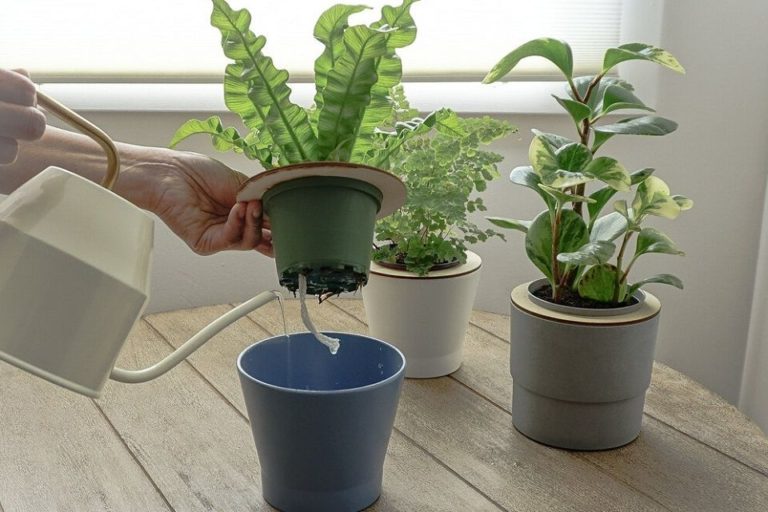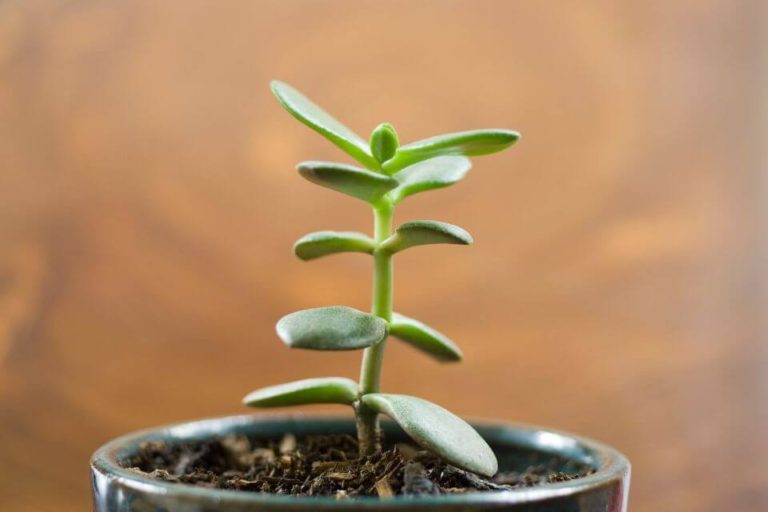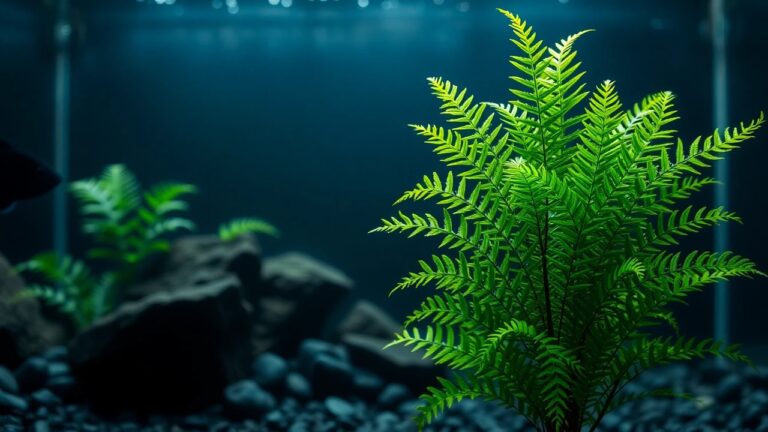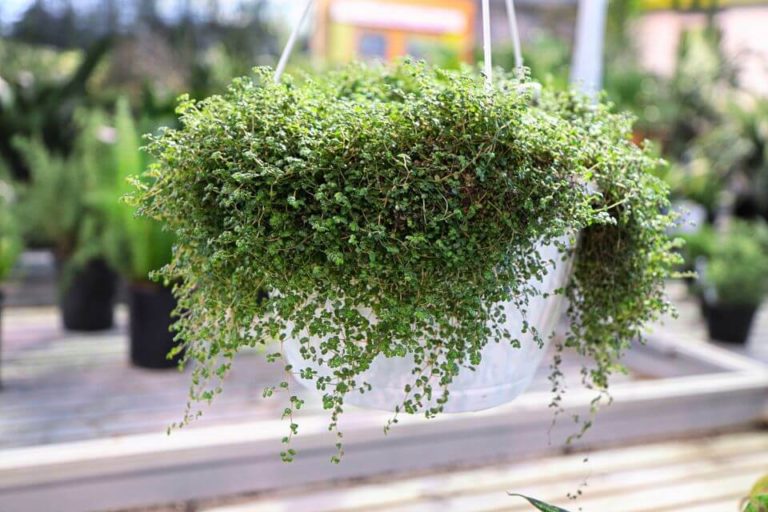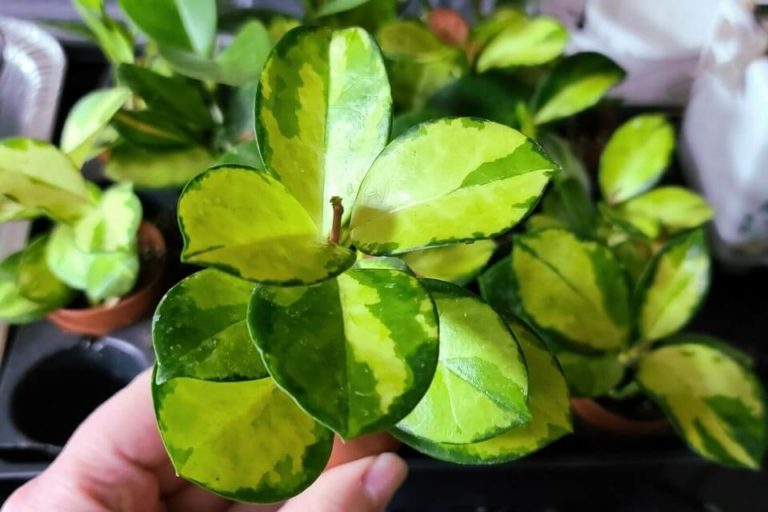Dracaena Trifasciata Care: How To Grow and Care For Snake Plant
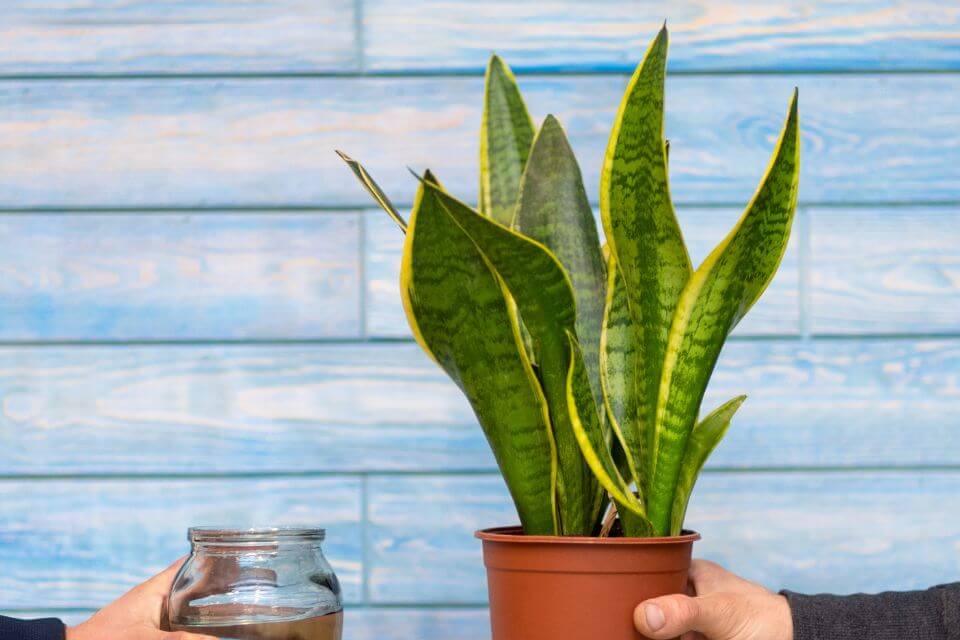
Dracaena Trisfaciata or Snake Plant is one of the common house plants that can be kept in our homes for decoration purposes. But did you know that the same plants have health benefits? Snake Plants are leading on the list of air-purifying plants.
Overall, in this article, we are explicitly reviewing a common snake plant known as “Dracaena Trisfaciata.” Keep reading the article to know how you should care for this snake plant to increase its appearance and lifespan, and continue enjoying its benefits.
TABLE OF CONTENTS
What is Dracaena Trifasciata Plant?
This is a commonly known Snake Plant species of flowering plant. It belongs in the family Asparagaceae and does well in native to tropical climates.
This evergreen perennial plant grows by forming dense strands with tiny pale green scented flowers and yellow striped leaves.
The plant comes in different varieties, including Black Coral, Cylindrical, and Laurentii. Sometimes the plant is sold as Sansevieria trifasciata. Overall, this snake plant is native to Africa as it grows in warm, sunny locations.
The Size and Appearance
As we have discussed above, Dracaena is an evergreen plant that has succulent leaves. The mature size of this plant grows up to 8 feet tall. The leaves tend to grow up to 30 inches in length and 2 to 3 inches wide.
The leaves are dark green with horizontal marbling and grey-green bands. Its attractive patterned leaves don’t spread or flop, making it great even for tight spaces.
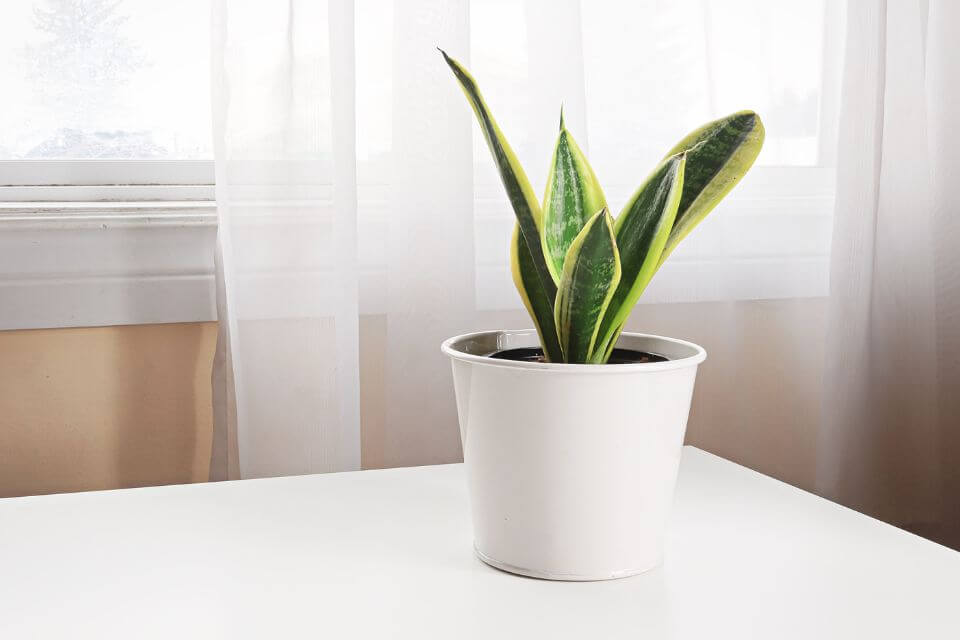
Dracaena Trifasciata Plant Placement and Benefits
Placement
– In the Living room & entry halls
The hall entries and living rooms are the most common places you place this plant. It will enhance the entire look of the inhabitants of your household.
In this case, consider placing the plant on the living room tables, entry hall windowsills, shelves, or mantels.
– In dining rooms
Based on the experts placing this plant in your dining room can enhance the look of your household and bring wealth. Essentially, Dracaena Trifasciata Plant is a great size for transforming your dining room.
The few perfect areas you can consider in the dining room include the picture mantle, dining room table, windowsills, or on the top of the shelving.
– In Your home office
This Snake Plant can help to enhance the ability to stay productive and concentrate when placed in your home office. You can place it anywhere in the office room, including on a bookshelf, on the windowsill, or the top of the desk.
– Rooms in east and southeast areas
In most cases, these rooms belong to wood elements. And indoor Snake Plants are most considered best for wood elements as they can enhance energy.
Therefore, placing this plant here is said to provide energy, thus helping someone feel more motivated and creative. The benefits can be useful for both personal and professional reasons.
The Benefits
– May be useful against allergies
Dracaena Trifasciatam is tested and approved to reduce the impact of various airborne allergens like dust and dander. It does this by releasing oxygen along adding moisture to the air.
The plants are more effective even against health-related issues such as respiratory and allergy problems.
– Enhances humidity
During the photosynthesis process, this snake plant tends to release moisture into the air. For instance, if you reside in a dry location, someone can consider keeping a few of these plants to typically increase the room humidity levels.
And in this way, you can prevent various respiratory issues because dry air contributes to different health hazards. The plant is also effective over dry skin, dry coughs, and sore throats.
– May enhances air quality
Dracaena Trifasciata Plant also can increase indoor air quality. The plant has the capability to absorb many pollutants, including formaldehyde, Co2, Benzene, toluene, trichloroethylene, and more.
These pollutants enter our houses through building materials, paints, furnishings, electrical appliances, new clothes, and carpets.
However, the dracaena plant absorbs these pollutants keeping your indoor air clean. In addition, the plant can as well convert CO2 to oxygen which in turn boosts the air quality.
– Increases the aesthetic value
In essence, Snake Planes are recommended due to their ornamental value. Their leaves create a flamboyant image when kept in a certain place.
Plus, they develop woody stems, add a bright splash of texture, and become tall when they fully develop. Overall, this plant is ideal for decorating your room as it can increase the house’s aesthetic value.
– Requires minimal maintenance
Generally, this Snake Plant is among the tolerant plants when it comes to taking care of it. This means it will not demand a lot of attention and care like many indoor plants out there.
It is easily adaptable to frequent watering and low-light conditions. Besides, this is another benefit you can consider growing Dracaena Trifasciata Plant in your home.
How to take care of the Dracaena Trifasciata Plant?
– Choosing a Pot and Soil
A 10-inch size pot is enough to plant this plant. However, choosing the pot, consider the one with an active drainage hole right at the bottom.
Besides, Terra cotta pots tend to work so well with Dracaena Trifasciata because they allow the soil to get dry more easily compared to plastic pots. Further, use the well-draining pot designed for succulents and cacti.
This type of pot is more resistant to getting oversaturated with water. And, when repotting your snake plant, avoid burying it too deep.
Dracaena trifasciata should be grown in an aerated, porous soil mix with excellent drainage. To do this, mix two parts of perlite and one part of regular potting soil.
Besides, this type of drainage soil provides enough nutrients and lets the excess water drain properly and freely. The alternative way is to purchase the commercial potting mix for the cactus plants.
– Dracaena Trifasciata Plant Watering
The best watering method for this plant is drenching the soil and allowing the excess water typically drip out. Water this plant as frequently as the potting mix dries out.
However, you may as well need to water it as frequently as one time per week during the warm summer weather. You man also can use automatic watering stakes to regulate the soil humidity levels.
In the winter season, consider reducing your watering frequency to one time per month or even less. Remember, the important care factor here is to prevent the soil from getting soggy.
And a general rule is to water only when half of the potting mix is dry. For these reasons, don’t depend on soil surface dryness. Instead, utilize your fingers to test a few inches of the soil. Water from below as encourages its roots to grow downwards.
– Dracaena Trifasciata Light Requirement
Bright, filtered sunlight available throughout the day is perfect for this Snake Plant. However, it can as well withstand dim to low light for long durations compared to other related regular houseplants.
Another ideal light condition is partial shade, where the plant gets direct sunlight for a period of 3 and 2 hours during the day. If you are planning to grow the Dracaena Snake Plant indoors, it is important if you keep it out of direct sunlight.
Intense sunlight via a window can badly scorch its stiff green leaves to yellow discoloration. And, if it grows near the south-facing window, consider placing it right behind the sheer curtain.
– Best Temperature for Optimal growth
For optimal growth, Dracaena Trifasciata will thrill growing in temperatures that are high than 50% Fahrenheit. For excellent results, ensure you maintain a steady indoor temperature between 90 and 70 degrees Fahrenheit.
Further, the plant can as well tolerate slightly low temperatures meaning your plant will also survive in during the winter. Keep it from the drafty windows to prevent it from getting damaged by the cold.
Optimal growth care for this snake plant means you avoid the temperature extremes. Like during the summer, avoid putting your plant in AC units airflow or in the drafts.
During the winter, ensure your plant does not stand near the radiators or heating vents. Heat and cold stress are common reasons for stiff Dracaena Trifasciata leave becoming droopy.
– The Required Humidity Levels
An average household humidity of around 40 degrees is great for cultivating Dracaena indoors. This plant tolerates low humidity, making it a great addition for even gardeners in cold regions.
But very low humidity, less than 40, can be problematic to this plant and may lead to fungal problems and rot. Using a humidifier will help to stabilize the humidity levels.
– Using Fertilizer
This is a slow-growing plant, and this benefits you from occasional fertilization. For excellent results, use a balanced fertilizer. The one that comes diluted to a half–strength.
For this case, apply once a month during the plant growing season. Meaning you should avoid fertilizing your plant during the winter when the growth is dormant.
Further, you can as well use organic fertilizer as it is perfect for Dracaena roots. Dracaena is not that heavy feeder, you are not required to fertilize it all.
Overall, 10-10-10 is also a great fertilizer as it ensures all the micronutrients and secondary needs for your plant. Always remember to dilute the fertilizer before using it to avoid over-fertilization and burns.
– Pruning Snake Plant
Generally, this plant is an ornamental loved for its variegated and long leaves. However, the plant requires some maintenance after every few months to typically maintain the overall appearance and size.
You will rarely prune dracaena leaves. Pruning will only be needed to get rid of the dying and dead leaves. When pruning this Snake Plant, ensure to use sharp and sterile tools to cut through the tough leave right at the base.
You should only prune the faded or yellow leaves for a healthy growing condition.
– Cleaning The Leaves
Use a soft and clean cloth alongside clean water. Take every leaf between the two soft tissue cloths, wiping off right on the top. This will reveal a healthy shine and help the snake plant soak in light easily and freely.
Wipe the leaves occasionally when you notice too much dust on them using a damp cloth.
Repotting Snake Plant
You should re-pot your plant when the roots begin emerging from the drainage hole or right on the soil surface. The other reason to re-pot is when plant leaves have outgrown the container.
Note that repotting Snake Plant should only be performed during later winter or during the early summer. Basically, this gives the plant enough duration to establish itself in a new location.
Please follow the steps below:
– Step 1: Pot preparation
When choosing a new pot, consider 2 to 1 inches larger in diameter compared to the older container. And the pot should have one bottom drainage hole to allow the excess water to drain freely after watering.
Now fill your new pot to around one-third full using the soil-based potting media or the potting soil formulated for tropical houseplants.
– Step 2: Lifting the plant
Water your plant before removing it from the old pot to aid to loosen the root ball. This will make it slide easily, not harming the plant. Further, consider placing your hand right over the top of the soil to support the plant base between your fingers.
In essence, the root ball is supposed to slide out from the pot when turned upside down. You might require thumping the sides to make it slide in case it is stuck. The visible roots on the root ball exterior, which are soft or dark, have developed root rot.
So, you can also trim off using a clean knife. Still, you can cut through the large roots which are encircling the root ball to avoid your Snake Plant becoming root bound.
– Step 3: Repotting
Always ensure your Snake Plant sits well in the new pot in a similar depth as it was in the previous growing. The top of the root ball should as well sit 2 to 1 inch beneath your pot rim.
Remove or add soil beneath the root ball, ensuring the plant has an appropriate depth.
Further, fill in the root using the additional soil after the plant is correctly positioned in the new pot. Consider thought watering after you have successfully repotted to settle the root soil and ensuring your potting media is also evenly moist.
– Step 4: Aftercare
It is a fact that this snake plant can tolerate direct sunlight. However, placing the pot in indirect and bright light for three or two weeks after repotting aids the plants recover fully from the transplant stress.
Also, allow its roots to establish for around one month before you start applying any kind of fertilizer. Water the plant when the top one inch of pot soil feels dry.
Remember, overly wet soil may lead to root rot or preferably lead to fungal issues on recently damaged or cut roots.
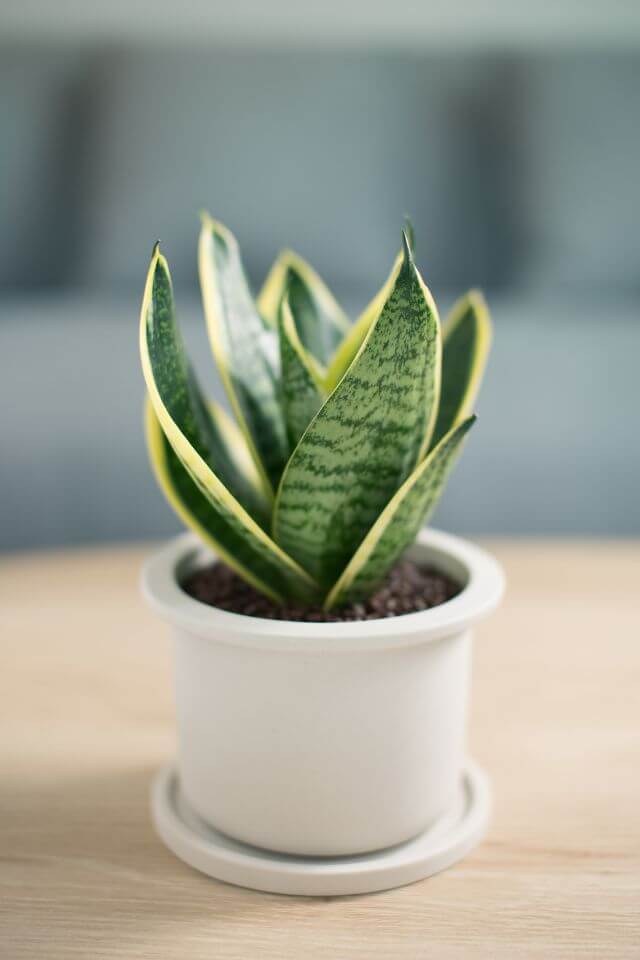
Dracaena Trifasciata Plant Propagation (step by step)
It’s easy to propagate this Snake Plant on your own. There are two methods you can do this, which include division and leaf cuttings methods. Read the below steps to know comprehensively understand how to harmlessly propagate Snake Plant.
Method 1:- Propagating Through Leaf Cuttings
This method is done by either soil or water. Let’s get started with the first method:
– Water Propagation
Tools needed:
- Safety Glasses
- Gardening Scissor
- Gardening gloves
- Some cotton balls
- Isopropyl or rubbing alcohol
- Paper towel
- Tall bowl or drinking glass
- Filtered distilled water
Instructions and Steps:
- Take your cotton ball and carefully drip it into the rubbing alcohol
- Wipe down your scissor blades using a wet cotton ball to typically get rid of viruses and germs
- Leave your scissor for drying and give it some time around 10 to 15 minutes.
- Select the healthy leaves from the snake plant and cut them gently and individually close to soil levels
- Place your cut leaves right on the paper towel to allow them dry
- Add 6 to 4-inch water to the bowl or glass and place your leaves above the cut end. At this point, remember to keep the bowl in a specific place where it receives indirect light.
- Now change the water after two days. Within a few days will start noticing some roots coming out.
- The leaves will be now ready to be planted in the soilless potting mixture.
– Soil Propagation
Tools needed:
- Gardening Scissor
- Safety Glasses
- Cotton balls
- Bowl and pot
- Gardening gloves
- Rubbing alcohol
- Soilless potting mix
- Rooting hormone
- Gardening trowel
Instructions and Steps:
- Dip your cotton ball into the Isopropyl alcohol to get rid of any harmful viruses and germs from scissor blades
- Cut the healthy leaves from your snake plant and place them on the paper towel.
- If you want to stimulate root growth, dip the cut end of the plant left to the rooting hormone.
- Now wait for around 3 and 2 days till the cut leaves start developing a callous
- At this point, you can plant your rooted leaves right in the soilless mixture after callous development.
- Consider leaving the leaves untouched for around two days and start watering. Also, remember to keep the pot in the bright area.
Method 2: Snake Plant Propagation by Division
Tools:
- Large snake plant
- Safety Glasses
- Gardening gloves
- Soilless mixture
- Pot
Instructions and Steps:
- Wear your protective gardening gloves
- Separate the clump of your snake plant leaves and root from the primary section of a plant. Besides, the division will offer you enough clumps of snake leaves with its primary rooting system.
- Place the separated clump right in the pot
- Fill your pot with a soilless mix, then water the plant moistening it.
Common Diseases and Problems
– Pest Problems
These Snake Plants are more prone to mealybugs and spider mites. To solve the issue, consider treating the infected plant areas using a natural pesticide like Neem oil.
Find a Neem oil spray, shake well and spray the affected zones. Ensure you spray each sword like a leaf using organic insecticide to get rid of the bugs. Most pests hide in the crannies and nooks of this plant foliage.
– Leaf Tips Turning Brown
Too much sunlight, cold weather, too much fertilization, or improper watering are among common factors that lead to browning leaf tips. Examine these conditions to save your plant.
Ensure you follow the correct instructions given in the water, temperature, and light sections as we explained above. The discolored or damaged leaf tips are supposed to get trimmed using clean tools after you sorted out the above issues.
– Leaves Turning Yellow
This is due to overwatering your plant. The first step to sorting out this issue is by allowing your plant soil to thoroughly dry. From here, fix your watering schedules by watering the plant often but with less water.
Also, remove all the dead, yellow leaves to aid the plant recover from this water stress. The other reasons for yellow leaves are due to extreme temperatures.
To solve this, keep the plant at a consistent temperature that falls within a perfect temperature range.
Avoid yellowing of leaves by following the below precautions;
- Ensure the plant has good air circulation
- Keep the green leaves free from any dust
- Apply water directly to plant potting soil and without wetting the leaves
- Remove all infected foliage as soon as possible
- Dropping or leaves bending
This is another sign that you are overwatering your plant or not getting enough sun exposure. To fix this issue, regulate your watering schedule and water on the growing medium when topsoil dries out.
Also, rotate your plant weekly to ensure every part is getting enough sun exposure.
– Curling and Twisting Leaves
If your plant is undergoing any kind of stress, the leaves will curl outward and inward. And this might be due to excess sun exposure, over or under-watering, transplant shock, and root rot.
You can get rid of these issues through the best preventive measures.
– Stretched or Narrow Leaves
This is caused by a plant not getting enough light. In this case, the leaves tend to direct their energy to typically grow longer leaves reaching the light source.
And this leads to narrow foliage because the plants focus on developing toward light sources. The solution is simply to move your pot in bright indirect light and cut the abnormally stretched leaves to promote healthier new snake leaves.
– Mushy Roots
The common factor of mushy roots is overwatering. The second might be a disease making a combination with an overwatering problem. Solve the issue by trimming off the affected areas to enhance healthy growth.
Rinse off the remaining soil and consider repotting your snake plant in high-quality potting soil with sand to typically improve drainage.
Snake Plant Varieties
- SansevieriaTrifasciata ‘Black Gold’ (Viper’s Bowstring Hemp)
- SansevieriaTrifasciata ‘Futura Robusta’
- SansevieriaTrifasciata ‘Golden Hahnii’
- SansevieriaTrifasciata ‘Twisted Sister’
- SansevieriaTrifasciata ‘Laurentii’
- Sansevieria Zeylanica ‘Ceylon Bowstring Hemp’
- Sansevieria Cylindrica ‘African Spear Plant‘
Frequently Asked Questions
Does Dracaena Trifasciata Plant flower?
The short answer is yes. This Snake Plant is a flowering one that blooms in spring. But it needs tropical conditions and needs to be outside. It rarely blooms indoors.
How Do Encourage Dracaena Trifasciata Plant to Flower?
Increasing this plant to sunlight exposure tends to boost its growth and increase the chances of blooming flowers.
Can I Grow Dracaena Trifasciata Plant Under Lights?
Yes, it will grow under lights if you supply a bright artificial lighting indoors. This is because this snake plant does much well when grown under indirect light for a few hours of daily sunlight.
How Fast Dracaena Trifasciata Plant Grow?
With the fact that this is a slow-growing plant, it may take around two to one and half months before you start seeing the new growth.
Is The Dracaena Trifasciata Plant Toxic to Cats and Dogs?
This snake plant is poisonous to dogs and cats. It contains saponins which can result in vomiting, nausea, and diarrhea if cats or dogs ingest it with fibrous leaves.
Where Can I Find the Dracaena Trifasciata Plant for Sale?
You will find this plant in your local garden stores and as well at online. Amazon, eBay, and Etsy are among the leading stores where you can purchase this snake plant.
Take Away
If you need a stylish houseplant that is easy to plant, grow and easy to take care of, consider the Dracaena trifasciata (the Snake Plant). This plant is even an ideal selection for beginner gardeners.
You will love its long and stiff leaves, which come in different varieties. In the above guide, you will understand how more about this snake plant in your journey to planting it in your home.

